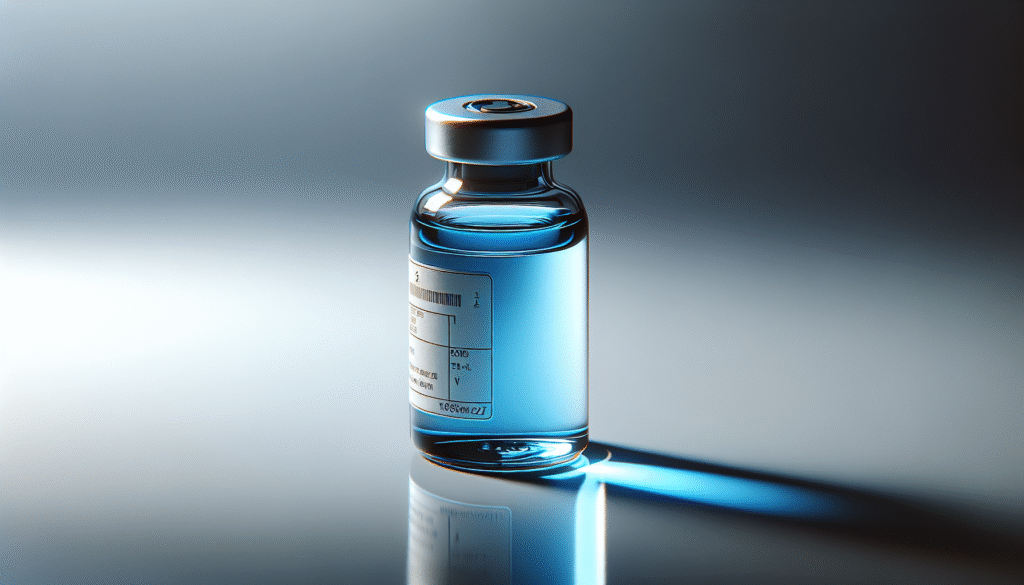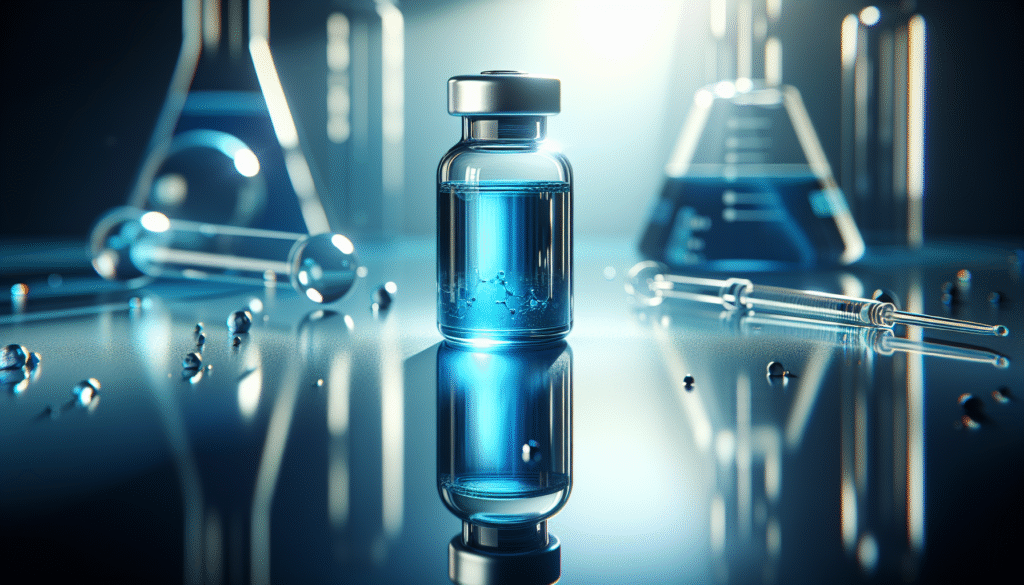
Have you ever considered how the chemical composition of a product impacts its effectiveness and safety? While many consumers order products online or from local stores, understanding the quality attributes of substances such as Methylene Blue is crucial for their proper application and safety. In this article, you will gain insights into assessing the quality of Methylene Blue products, ensuring that you make informed decisions for your health and well-being.
Understanding Methylene Blue
Methylene Blue, a synthetic chemical compound, has an extensive history of usage in various fields, ranging from medicine to dyed textiles. Its applications in science as a dye, a medication, and a diagnostic tool highlight its versatility.
The History and Uses of Methylene Blue
Methylene Blue was first synthesized in the 19th century. Initially used as a dye, it evolved into a critical component in various medical applications, including treatment for methemoglobinemia and as an antiseptic. In modern settings, it finds roles in research and as a potential treatment in neurodegenerative disorders.
Chemical Properties
The chemical composition of Methylene Blue is C16H18ClN3S, and it is typically found in a crystalline solid form. It is soluble in water and exhibits a vibrant blue color that is often used in staining biological tissues. Understanding these properties not only elucidates its function but also assists in assessing product quality.
Identifying Methylene Blue Products
Recognizing the type of Methylene Blue product you require is the first step in assessing its quality. Methylene Blue comes in various forms and concentrations, each tailored for different applications.
Types of Methylene Blue Products
Here are the most common forms of Methylene Blue you might encounter:
| Product Type | Description | Common Uses |
|---|---|---|
| Pharmaceutical Grade | High-purity Methylene Blue for medical applications | Treating certain medical conditions |
| Analytical Grade | Commonly used in laboratories for research purposes | Staining and identifying biological tissues |
| Industrial Grade | Lower purity, used as a dye in textiles and other industries | Dyeing fabrics and industrial applications |
Understanding Concentrations
Methylene Blue is available in various concentrations, which may alter its efficacy and safety in different use cases. It is vital to assess the concentration based on your intended usage to ensure safety and effectiveness.

Quality Control Measures
When evaluating the quality of Methylene Blue products, it’s essential to assess a series of quality control measures that manufacturers should adhere to. Quality control standards ensure that the product meets specific guidelines necessary for safe and effective use.
Checking the Source
Identifying the source of Methylene Blue is pivotal. Purchasing from reputable manufacturers and suppliers can ensure that the product undergoes rigorous quality control measures. Always look out for certifications that indicate compliance with industry standards.
Third-Party Testing
Third-party testing is a method wherein independent laboratories assess the purity and safety of the Methylene Blue product. Products that pass these tests often come with certification or validation, providing assurance regarding their quality.
Review of Certificates of Analysis (CoA)
A Certificate of Analysis (CoA) is a document prepared by an analytical laboratory that confirms the product meets specified criteria, including purity, concentration, and absence of contaminants. Always ask for a CoA when purchasing Methylene Blue.
What to Look for in Methylene Blue Products
Being informed about the appearance and characteristics of high-quality Methylene Blue products can save you from potential adverse outcomes.
Color and Appearance
Methylene Blue should exhibit a clear, deep blue solution and, when in crystalline form, should appear even without impurities or discoloration. Any variations in color could signify contamination or degradation.
pH Levels
The pH level of Methylene Blue solutions is crucial for its effectiveness. Ideally, the pH should be within a specific range, which varies based on the intended use. Always refer to the manufacturer’s specifications for optimal pH levels.
Impurities and Contaminants
High-quality Methylene Blue should be free from contaminants such as heavy metals and other chemical impurities. Assessing the purity levels, as indicated in the CoA, ensures you are purchasing a product safe for use.

Understanding Regulatory Standards
Quality assessment doesn’t solely depend on manufacturer claims; it is also governed by regulatory standards set by health and safety bodies.
FDA Guidelines
In the United States, the Food and Drug Administration (FDA) regulates pharmaceuticals, including Methylene Blue. Products must follow certain efficacy and safety guidelines. Familiarize yourself with these regulations to ensure compliance when purchasing for medical use.
International Regulations
Countries outside the United States have similar regulatory organizations. For example, the European Medicines Agency (EMA) oversees pharmaceuticals in Europe. Understanding both local and international standards can be beneficial, especially if you are considering importation.
Recognizing Reputable Suppliers
Finding a trustworthy supplier is vital for ensuring product quality and safety.
Researching Suppliers
Conduct thorough research on potential suppliers for Methylene Blue products. Look for reviews, testimonials, and certifications that validate their integrity and reliability.
Customer Support
A reputable supplier should have a responsive customer service team to address your inquiries and concerns. Good communication is often an indicator of a supplier’s commitment to customer safety and satisfaction.
Return and Refund Policies
An established supplier should have transparent return and refund policies in case the products do not meet your expectations. Familiarize yourself with these policies before making a purchase.

Cost Analysis
When it comes to assessing quality, understanding the cost of Methylene Blue products can provide insights. However, it is not a straightforward relationship; lower prices do not necessarily indicate a lack of quality, nor do higher prices guarantee great results.
Price vs. Quality
A higher price may reflect better quality, especially if the product has undergone extensive testing and meets high standards. However, excessive markups should also raise red flags. Aim to compare prices from multiple suppliers and evaluate what is included in the price.
Bulk Purchases
If you anticipate the need for larger quantities, consider bulk purchasing options. Suppliers often provide discounts for bulk orders, but ensure quality is not compromised by sourcing cheaper alternatives.
Practical Application Methods
Understanding proper application methods ensures the effectiveness and safety of Methylene Blue products.
Dilution Guidelines
If you plan to use Methylene Blue in a diluted form, familiarize yourself with proper dilution guidelines. Incorrect dilution could lead to ineffective treatment or harmful effects.
Storage Recommendations
Storing Methylene Blue correctly is crucial in maintaining its effectiveness. Store it in a cool, dark place, away from light and moisture. Make sure the container is appropriately sealed to prevent contamination.
Disposal Guidelines
When disposing of Methylene Blue, follow local regulations for hazardous materials. Proper disposal prevents environmental contamination and ensures safety.

Evaluating Efficacy
After assessing the quality of the Methylene Blue product, it’s vital to evaluate its efficacy in your specific application.
Monitoring Results
If you are using Methylene Blue for treatment, monitor your results closely. Keep a diary to track any changes, effects, and side effects. This will provide insight into the effectiveness of the product.
Consulting Professionals
Should you have questions about the results, do not hesitate to reach out to a healthcare provider or a professional within the relevant field. Expert advice can often clarify uncertainties and recommend further actions.
Conclusion
In an age where information is at your fingertips, understanding the quality of Methylene Blue products is not only smart but essential. From identifying product types to researching suppliers, a methodical approach can help you make informed choices. Whether for personal, academic, or industrial applications, the quality of Methylene Blue significantly impacts its effectiveness and safety.
By following the guidelines outlined in this article, you will be equipped to assess various Methylene Blue products critically. Investing time in research today ensures better health and safety outcomes tomorrow.
